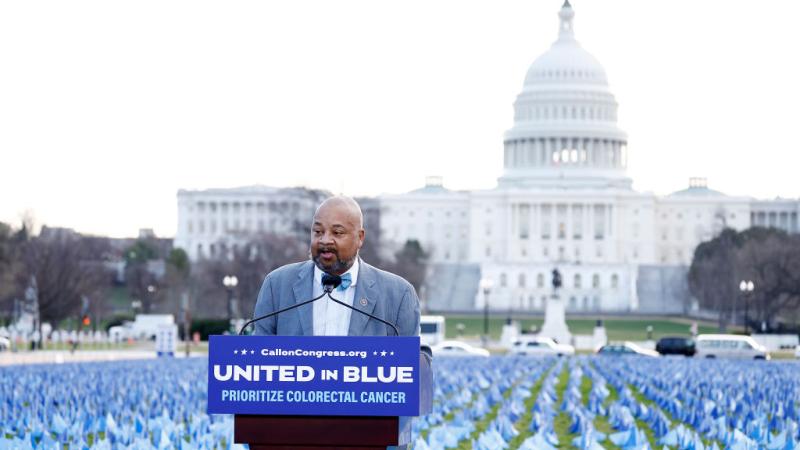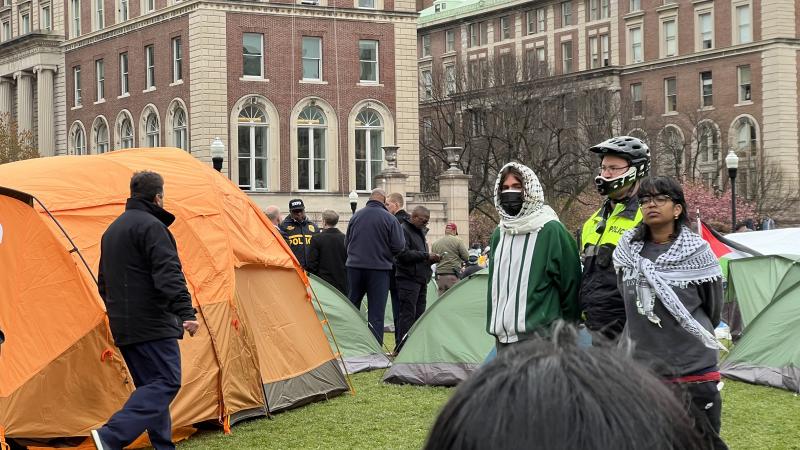Will the 2020 presidential race ever end? What to expect on Election Night.
Nearly 100 million Americans have already voted early or cast mail-in ballots.
Finally — finally — we're there: Election Day.
But here's some potentially bad news: The whole thing may not actually end on Tuesday.
You've all seen the nightmare scenarios -- one actually ends with House Speaker Nancy Pelosi (D-CA) as temporary acting president. And of course, no one really knows what's going to happen (least of all the pollsters -- remember 2016?). But here's what you might expect to happen on Election Day.
First, a ray of optimism: President Trump shocked the world last time by sweeping to victory over heavy frontrunner Hillary Clinton — all before midnight. On the other hand, Democrat Joe Biden has built up, according to some polls, a double-digit lead nationally, and he's still well ahead in key battleground states like Pennsylvania (2.9%), Michigan (5.1%), and Wisconsin (6.6%), according to a running average tabulated by Real Clear Politics (RCP). Trump can lose two of those and still win reelection, but he can't lose all three unless he pulls off an upset elsewhere.
So who knows, maybe it's a runaway and one of the candidates sweeps to victory before Tuesday turns into Wednesday.
One way it could be a short night for Trump is losing some key states — all in the Eastern time zone — that he won in 2016, including Pennsylvania, Georgia, North Carolina, Ohio and Florida (with the Panhandle in the Central time zone). If Trump loses most or all of those states — or even just two, like Pa. and Fla., or one of those two and N.C. — you can head to bed.
Yet if the president holds onto many of the early key states and, say, Florida or Pennsylvania isn't called quickly, then the race moves to the Midwest, where Wisconsin and Michigan — both won by Trump in 2016 — will loom large. There's also Iowa in the mix, where RCP says Trump has just a 1.2% lead, well within the margin of error. He won all three last time around.
After that, all eyes will sweep west to Texas (where Trump holds a surprisingly small 1.2% lead, according to RCP). Other states, like Colorado, Arizona, New Mexico and Nevada are reportedly in play, but RCP appears to put Colorado and New Mexico out of reach for Trump, who trails by double digits in each state.
But remember, this is 2020, the year from hell, with a pandemic and race riots sweeping the nation — not to mention the swarms of murder hornets from Asia swooping in. So, in keeping with this crazy year, it's worth noting that there are a lot of indicators that point to a longer night ... or week ... or month.
First, there's this. In 2016, about 33 million Americans cast ballots by mail. That was about a quarter of all the votes cast. But this year, more than 61 million Americans have already cast ballots by mail, according to the U.S. Elections Project (which also says more than 97 million voters have already voted early or mailed in ballots). For the record, the U.S. Elections Project also says there are nearly 30 million mail ballots "outstanding."
With that surge in mail-in ballots, election workers — who will, like all of us, be hampered by COVID-19 precautions — are going to be working overtime. Some states allow for opening and tabulating ballots early — Florida is actually allowed to begin counting 22 days before Election Day. And election officials there say the count should be mostly done by midnight.
Several other states are also already tallying mail-in ballots, including North Carolina, Georgia, Ohio and Iowa. But others states do not allow early counting. Michigan, Pennsylvania and Wisconsin all have laws that prohibit election officials from processing ballots in advance of Election Day. That means the real counting there will begin on Tuesday.
The process could be time consuming — and confusing. "In Pennsylvania, with 20 electoral votes, the state Supreme Court allowed ballots to arrive at election offices by Friday night, even without a legible postmark," the New York Post reported. "Republicans say that's illegal and they may contest results in court. Trump won the state by fewer than 45,000 votes in 2016."
"North Carolina accepts late mail-in ballots postmarked on Nov. 2, but the state Board of Elections expects to have 97 percent of votes reported on election night," said the Post, adding this: "Election workers must remove the ballots from their envelopes, check for errors, sort them and flatten them — all before they can be run through scanners and be tabulated. In states with well-established vote-by-mail programs, this processing happens weeks before Election Day. The results are often released quickly."
Then there are the news agencies. The Associated Press has long been the top election-caller, but the worldwide news agency warned that it will take its time on Nov. 3.
"Patience, America," the AP wrote on Monday. "We may not know who won the presidential election on Tuesday night. And if so, it does not necessarily mean anything is broken, fraudulent, corrupted or wrong."
But on the optimistic side, popular vote doesn't matter one bit, it's all about who collects 270 votes in the Electoral College. So that means the expected 120 million to 140 million ballots expected to be cast do not all have to be counted to know who has won individual states.
Still, since it's 2020, there's one more thing — or two, actually: the "Blue Shift" and the "Red Mirage."
Democrats are more likely to vote by mail, Republicans more likely to vote in person. That means on Election Night, Biden might go up quickly based on mail-in ballots, then get caught by Trump as in-person and Election Day ballots are tabulated.
"In general, those early processing states — Florida, Georgia, Ohio and North Carolina — will report mail ballots first," said the AP. "Those will skew Democratic. But then those states will start tallying Election Day votes. Those should lean Republican. So initial returns may be heavily Democratic, then become more Republican as the night goes on."
But the wire service offered a final warning.
"The pattern could be reversed in those critical Rust Belt battlegrounds of Michigan, Pennsylvania and Wisconsin. There, the initial vote reported will be the heavily-Republican in-person Election Day ballots, that could be misleading — a 'red mirage.' That's because Democrats may catch up as mail ballots are tabulated in the hours and days afterward — that's been referred to as the 'blue shift.'"
Red mirage, blue shift, pandemic, murder hornets — all words added to America's lexicon in 2020. One day soon, this year will end.














